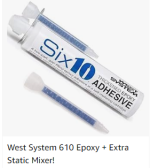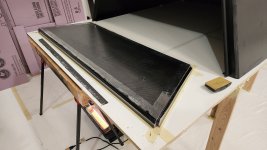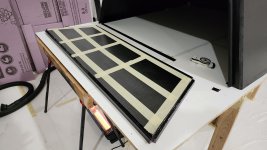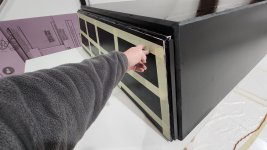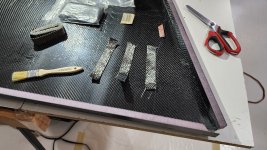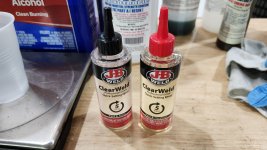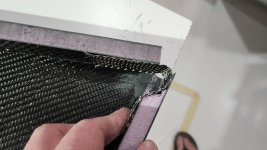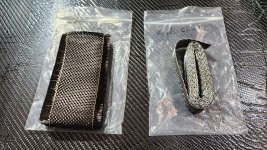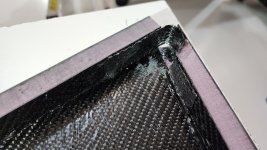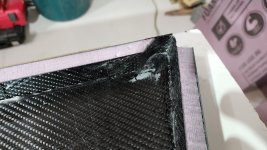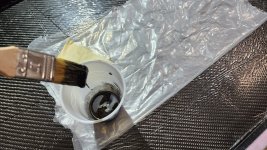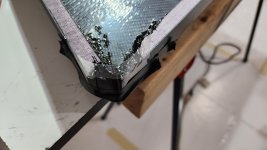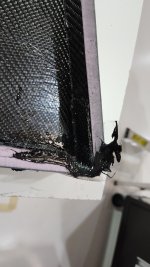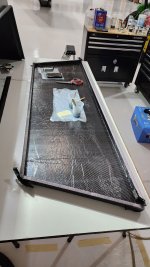Yeah… once you start mixing in pigments, the handy tube loses a bit of its convenience. I’ve used white pigment before in traditional non-thickened epoxy, a little goes a long way, but I noticed that the epoxy was a bit thinner and liked to flow/drip a little more. Did you find that to be the case with black pigment and Max Bond?
It did not change at all. It is such a small percentage so I would be surprised if it did. There are many great polymers on the market. There are also some ok ones and off course some not so good ones. Different jobs dictate different types. One of the biggest mistakes and a catalyst in failing projects is to just generalize and gather an epoxy for the job. Perhaps it is a weekly special........or someone said or mentioned a product. No specificities really, but it happens a lot and then at some point I get a pm through my gmail or a hail through my FB page. Most all of them seems surprised when I suggest glue failure. They will then argue that it is high quality epoxy and or the right epoxy for the purpose and so forth we go.
One of the most valuable tools you can have in ya box is past experience with your alchemist and his/her polymer formulation. It is not rocket science really. I can assure you that the F-1 guys dont stock their polymers from your neighborhoods' hardware store. I am not trying to knock on anyone or any product with what I'm about to say.
Marine grade epoxies belong in the marine world. Nothing wrong with them. They are designed for the purpose of bonding wood, fiber glass and other products in a severe salty realm. They do that so very good. They are designed and manufactured in very large qualities to balance profit with performance, and in the end consumers get an awesome product that does exactly what it is designed to do. That said were you to build a F-1 wing, or perhaps an aerospace component, you need to look at the F-1 or Aerospace store. Yes, you will pay more but you get the product that is designed for the right job and it will do just that.
So if I build a camper by using a marine grade epoxy will it fail...... I dont have the answer. Perhaps No.....Perhaps yes. There is only one way you can ensure success, and that is the point I am leading to. Find a alkymist that you like. Do a few small jobs. Test the helguland utta it, and if it holds up, stay right where ya are. In working with composites since I was a silly Danish teenager I have never had a failure. Not withstanding the parts I shot at.....


, but that is what you need. It is awesome when some one says hey.....try this, but before you rock it, please test it in a similar application of what your about to build. I assure you, you'll be happy ya did, regardless how it holds up. I am sure that there are more exotic manufactures of polymers than my vendor, but again this line has performed flawlessly for me over the past twenty some years I think it is.
After reading through this thread and you have already forgotten everything said, I just want you to walk away with one thing to remember......... Test first.




